“Serengeti National Park encompasses 5,700 square miles of grassy plains and woodlands near the northern border of Tanzania, and is home to more than 3,500 lions grouped into a couple dozen prides. Photographer Nick Nichols and videographer Nathan Williamson made several extended trips to the Serengeti between July 2011 and January 2013, determined to break new visual ground in their coverage of the Serengeti Lions”.
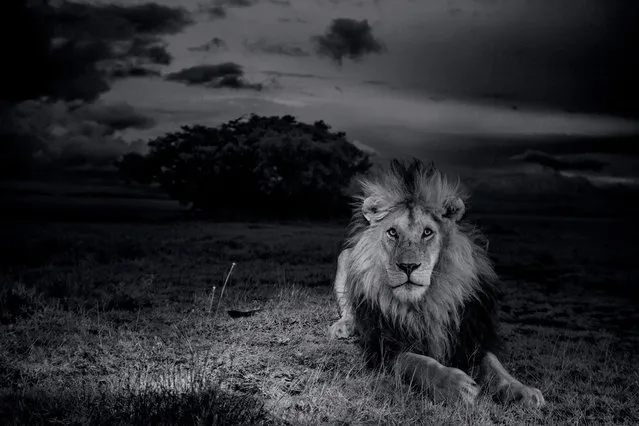
Photographer Nick Nichols made several extended trips to the Serengeti between July 2011 and January 2013, determined to break new visual ground in the coverage of the Serengeti Lion. Here, C-Boy, a dark-maned male lion defending his interests, confronts the peril of lion-on-lion violence on a daily (and nightly) basis. Four years ago, C-Boy barely survived a fight for dominance with three other males. (Photo by Michael Nichols/National Geographic via The Atlantic)
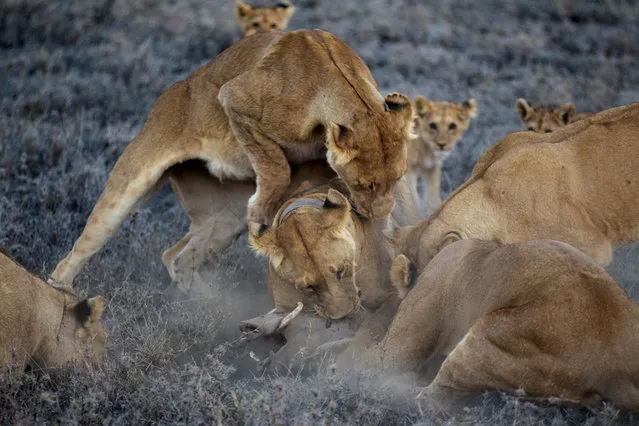
The Vumbi females – their pride name is Swahili for “dust” – kill a warthog they've dragged from its burrow. Such small meals help bridge the lean, hungry, dry season, when cubs may otherwise starve. (Photo by Michael Nichols/National Geographic via The Atlantic)
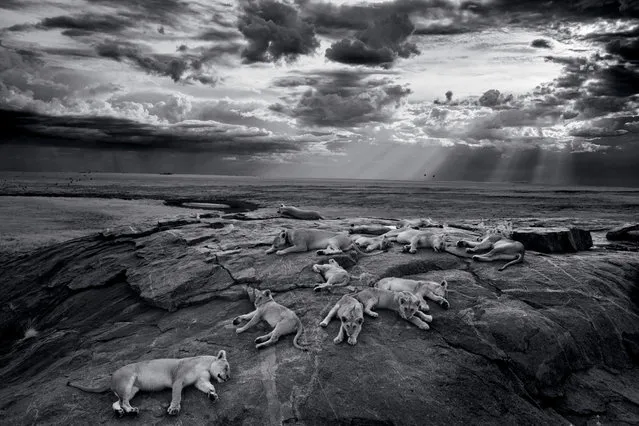
The Vumbis rest on a kopje, or rocky outcrop, near a favorite water hole. Lions use kopjes as havens and outlooks on the plains. When the rains bring green grass, wildebeests arrive in vast herds. (Photo by Michael Nichols/National Geographic via The Atlantic)
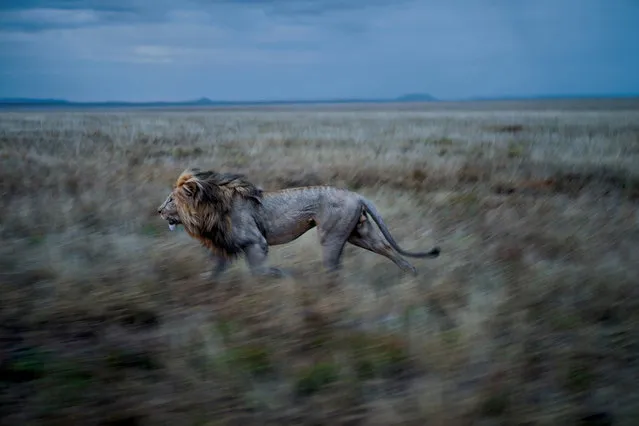
Hildur, C-Boy's partner, frequently makes a long run to visit the Simba East pride. A coalition that controls two prides must maintain vigilance over both. (Photo by Michael Nichols/National Geographic via The Atlantic)
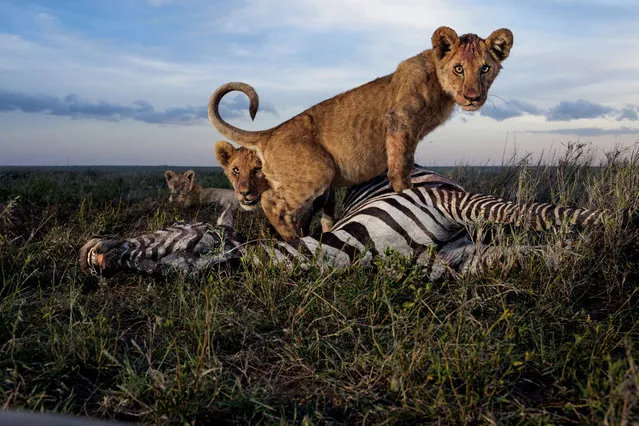
Cubs of the Simba East pride: too young to kill but old enough to crave meat. Adult females, and sometimes males, do the hunting. Zebras and wildebeests rank high as chosen prey in the rainy season. (Photo by Michael Nichols/National Geographic via The Atlantic)
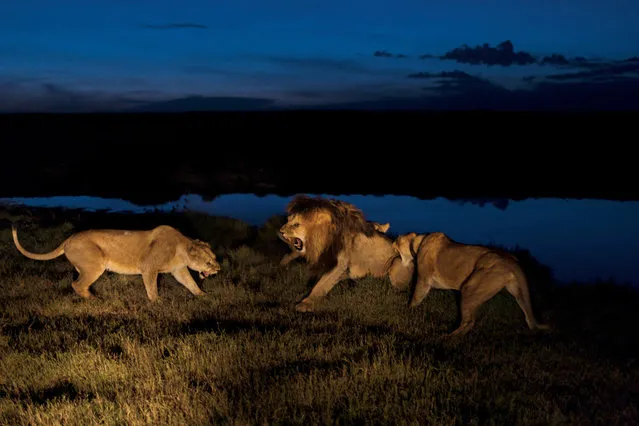
Dry season is hard on everyone. Vumbi females, stressed and fiercely protective of their young, get cross with C-Boy, though he's one of the resident fathers. (Photo by Michael Nichols/National Geographic via The Atlantic)
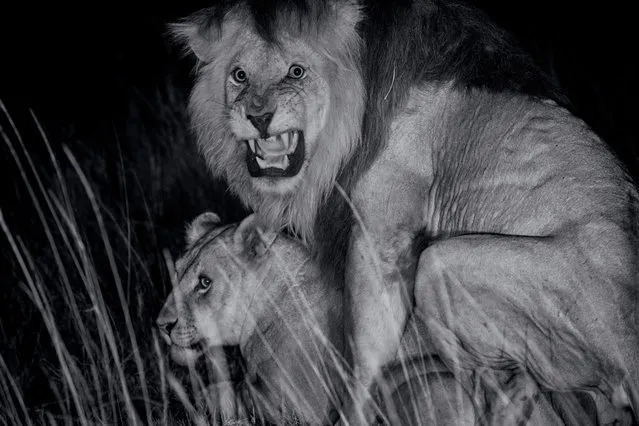
C-Boy mates with a Kibumbu pride female. After fathering cubs, a resident male can be displaced by other males. His young offspring will then be killed by the new males or left to die. (Photo by Michael Nichols/National Geographic via The Atlantic)
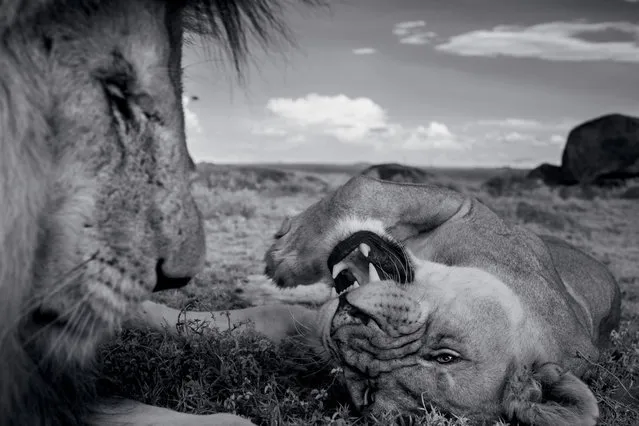
C-Boy and a Vumbi female relax between matings. During estrus a female may be monopolized for days by a single male consort. Dark manes correlate with robustness, and dark-maned studs like C-Boy are preferred. (Photo by Michael Nichols/National Geographic via The Atlantic)
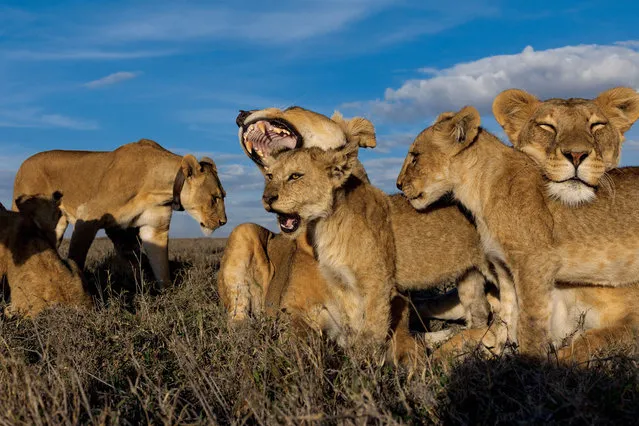
Older cubs like these Vumbi youngsters are raised together as a creche, or nursery group. Pride females, united in the cause of rearing a generation, nurse and groom their own and others' offspring. (Photo by Michael Nichols/National Geographic via The Atlantic)
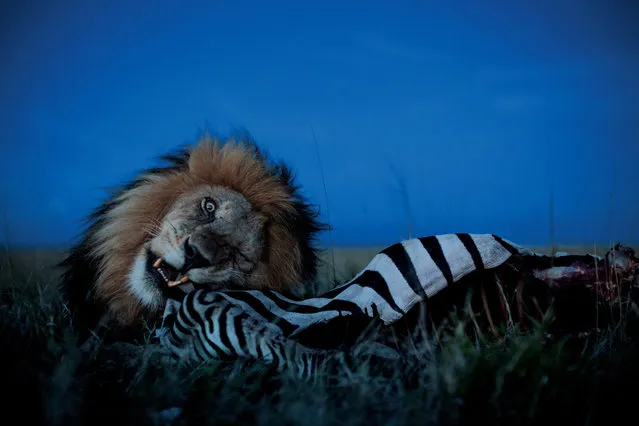
A male often asserts his prerogatives. C-Boy feasts on a zebra while the Vumbi females and cubs wait nearby, warned off by his low growls. Their turn will come. (Photo by Michael Nichols/National Geographic via The Atlantic)
09 Aug 2013 08:15:00,
post received
0 comments
